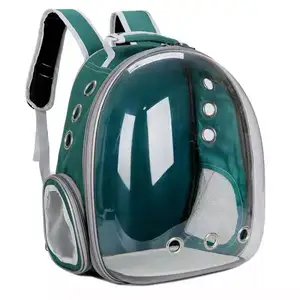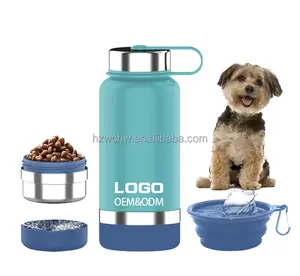Phổ biến trong ngành của bạn






Pet chai nhựa tái chế máy PP PE nghiền và máy đùn HDPE phim máy giặt
7.500,00 US$
Đơn hàng tối thiểu: 1 Bộ
Vận chuyển mỗi chiếc: 133,97 US$







Anh Hùng Chai nhựa PET tái chế máy PP PE huỷ và rửa dây chuyền sản xuất HDPE phim máy giặt
7.500,00 US$
Đơn hàng tối thiểu: 1 Bộ
Vận chuyển mỗi chiếc: 133,97 US$







Pet plaststretch thổi khuôn máy 4/6 khoang khuôn mẫu thả chai/đầy đủ tự động Chai nhựa PET thổi máy
10.000,00 US$ - 11.000,00 US$
Đơn hàng tối thiểu: 1 Bộ







Vpack 2023 Phiên Bản Mới 6-Khoang Pet Nhựa Chai Nước Thổi Khuôn Máy/Tự Động 9000bph Servo Ổ Đĩa Chai Blower
8.000,00 US$ - 9.000,00 US$
Đơn hàng tối thiểu: 1 Bộ







Máy Đóng Chai Nước Công Nghiệp 500Ml 1500Ml Tự Động 3 Trong 1 Chất Lượng Tốt
7.500,00 US$
Đơn hàng tối thiểu: 1 Bộ







Tự Động Tốc Độ Cao Đồ Uống Chai Phân Loại Máy PET Chai Unscrambler Máy
5.000,00 US$ - 10.000,00 US$
Đơn hàng tối thiểu: 1 Bộ






Tự Động Chai Unscrambler LP-12 Chai PET Unscrambler Máy Móc Của Chai Unscrambler Nhà Cung Cấp
19.000,00 US$
Đơn hàng tối thiểu: 1 Bộ






Máy Sắp Xếp Chai Tự Động Chai Pet Unscrambler Máy Phân Loại Chai Tròn
1.200,00 US$ - 3.380,00 US$
Đơn hàng tối thiểu: 1 Bộ






Fostream Máy Cấp Thức Ăn Tự Động Hoàn Toàn Tốc Độ Cao Bình Nhựa Cho Thú Cưng Máy Phân Loại Chai Nhỏ Không Xáo Trộn
8.000,00 US$ - 15.000,00 US$
Đơn hàng tối thiểu: 1 Bộ






Nhà Sản Xuất Tốc Độ Cao Bán Tự Động Điện Quay Bảng Vòng Chai Unscrambler Chai Pet Trung Chuyển Phân Loại Máy
1.016,00 US$ - 1.036,00 US$
Đơn hàng tối thiểu: 1 Bộ






HZPK Máy Phân Loại Chai Tròn Bằng Nhựa PE Tự Động Cho Thú Cưng Máy Phân Loại Bàn Xoay
6.000,00 US$
Đơn hàng tối thiểu: 1 Đơn vị






Tự Động Và Tốc Độ Cao Vật Nuôi Chai Unscrambler/Chai Unscrambling Máy
10.000,00 US$ - 15.000,00 US$
Đơn hàng tối thiểu: 1 Bộ
Các tìm kiếm liên quan:
tự động pet chai unscrambling máypet phôi máy cho chai nhựachai unscramble máypet chai phôi máy tự độngđộng cơ servo pet chai máyrỗng chai depalletizer máymáy ép chai thuốc trừ sâubottel làm cho máydây chuyền sản xuất giải pháp chai ivsản phẩm mới pet chai unscramblingpe chai unscrambling máytự động unscramble máy cho chai petnước giải khát chai unscrambling máysm 8y pet chai máy làm200ml 2l pet chai máy làm


















Tự Động Chai Unscrambler/Feeder PET Chai Phân Loại Máy Cho Đóng Chai Dòng
17.500,00 US$
Đơn hàng tối thiểu: 1 Bộ






Ksc KLP-100 đầy đủ tự động CE chứng nhận 10-1000ml vòng Chai PET unscramble Máy chai
5.800,00 US$ - 6.300,00 US$
Đơn hàng tối thiểu: 1 Bộ




Zhangjiagang Mars Máy Phân Loại Thùng Chứa Tự Động Máy Phân Loại Cho Ăn Chai PET Máy Phân Loại
16.000,00 US$
Đơn hàng tối thiểu: 1 Bộ






JPACKS Máy Phân Loại Sắp Xếp Chai Nhựa PET Nhỏ Tốc Độ Cao Tự Động Hoàn Toàn Máy Phân Loại Có Thể Tháo Rời
5.700,00 US$ - 6.550,00 US$
Đơn hàng tối thiểu: 1 Bộ

Tự Động PET Unscramble Chai Máy/Botle Unscrambler
20.000,00 US$
Đơn hàng tối thiểu: 1 Bộ
Vận chuyển mỗi chiếc: 4.803,50 US$






Tự động Nhựa PP PE VẬT NUÔI Chai Unscrambler/Unscrambling Máy
10.000,00 US$ - 14.000,00 US$
Đơn hàng tối thiểu: 1 Bộ
Vận chuyển mỗi chiếc: 7.495,00 US$






Kefai máy chất lượng tốc độ cao hoàn toàn tự động chai unscrambler máy quay Chai PET phân loại colletcting máy
4.670,00 US$ - 5.857,00 US$
Đơn hàng tối thiểu: 1 Bộ
Vận chuyển mỗi chiếc: 15.601,00 US$






CE Máy 1000-30000 Bph Đầy Đủ Tự Động PP HDPE PC PET Chai Unscrambler
Sẵn sàng vận chuyển
6.900,00 US$ - 7.000,00 US$
Đơn hàng tối thiểu: 1 Bộ
Vận chuyển mỗi chiếc: 177,94 US$



Tốc độ cao Tự động Pet nhựa thủy tinh tinh thần chai ăn phân loại SORTER ROTARY unscrambler tích lũy máy
5.000,00 US$
Đơn hàng tối thiểu: 1 Bộ






Tốc độ cao Tự động Chai PET unscrambler máy, chai tự động phân loại máy, tự động chai SORTER
Sẵn sàng vận chuyển
11.000,00 US$ - 16.500,00 US$
Đơn hàng tối thiểu: 1 Bộ
Vận chuyển mỗi chiếc: 720,48 US$






Tự động tốc độ cao Chai Phân Loại máy nhựa PET PP HDPE chai unscrambler máy
11.012,00 US$ - 12.024,00 US$
Đơn hàng tối thiểu: 1 Bộ




Máy Cho Ăn Chai Nhựa Tròn Tự Động Bàn Xoay Cho Chai PET
6.500,00 US$
Đơn hàng tối thiểu: 1 Bộ
Vận chuyển mỗi chiếc: 2.310,00 US$




Tự động quay chai thủy tinh vật nuôi phân loại bàn xoay ăn bảng chai unscrambler máy
3.000,00 US$
Đơn hàng tối thiểu: 1 Bộ






SUS304 Tự Động Pet Chai Unscrambler Phân Loại Chai Máy Máy Trung Chuyển
3.200,00 US$ - 15.000,00 US$
Đơn hàng tối thiểu: 1 Bộ






Tự động tốc độ cao Chai PET ROTARY unscrambler máy/Pet PP chai sorte
13.000,00 US$ - 15.000,00 US$
Đơn hàng tối thiểu: 1 Bộ
Vận chuyển mỗi chiếc: 1.301,80 US$






CapsulCN Tốc Độ Cao Tự Động Chai Pet Unscrambler Máy Chai Phân Loại Máy
10.400,00 US$ - 11.600,00 US$
Đơn hàng tối thiểu: 1 Bộ






Taire machine High Efficient With CE Standard PET Bottle Unscrambler bottle sorter sorting machine
5.000,00 US$ - 30.000,00 US$
Đơn hàng tối thiểu: 1 Bộ








Chai tự động Scrambler Chai PET unscrambler máy
6.900,00 US$
Đơn hàng tối thiểu: 1 Bộ
Vận chuyển mỗi chiếc: 22,53 US$






HONE Bán Chạy Tự Động Quay Biến Bảng Ăn Bộ Sưu Tập Vòng Pet Chai Unscrambler Máy Cho Điền Capping Dòng
Sẵn sàng vận chuyển
1.500,00 US$ - 1.600,00 US$
Đơn hàng tối thiểu: 1 Bộ
Vận chuyển mỗi chiếc: 408,95 US$






Chai Nhựa Tự Động Unscramber/Chai PET Unscrambler/Chai Phân Loại Máy
10.500,00 US$ - 11.000,00 US$
Đơn hàng tối thiểu: 1 Bộ
Vận chuyển mỗi chiếc: 11.500,00 US$






Bán Tự Động Nhựa PP PE VẬT NUÔI Chai Unscrambler/Unscrambling Máy/Phân Loại Máy
2.000,00 US$
Đơn hàng tối thiểu: undefined






Hiệu quả cao đầy đủ tự động quay Pet nhựa lọ nhỏ chai unscrambler máy
10.000,00 US$ - 26.000,00 US$
Đơn hàng tối thiểu: 1 Bộ






Máy Sắp Xếp Chai Nước Khoáng Uống Chai PET Tự Động
1.500,00 US$
Đơn hàng tối thiểu: 1 Bộ
Vận chuyển mỗi chiếc: 1.540,00 US$






Quy Mô Nhỏ Full Auto 8000BPH Pet Chai Unscrambler Máy Để Mexico
19.000,00 US$
Đơn hàng tối thiểu: 1 Bộ






Solidpack Bán Hot Tự Động Quay Vòng Bảng Ăn Bộ Sưu Tập Vòng Pet Chai Unscrambler Máy Để Điền Capping
900,00 US$ - 1.500,00 US$
Đơn hàng tối thiểu: 1 Bộ
Các danh mục hàng đầu
Giới thiệu về pet chai unscrambling máy
Alibaba.com cung cấp các sản phẩm 1098 pet chai unscrambling máy. Có rất nhiều pet chai unscrambling máy lựa chọn dành cho bạn, chẳng hạn như nhà máy sản xuất, in ấn cửa hàng, và bán lẻ. Bạn cũng có thể chọn từ hoa kỳ, ấn độ, và việt nam pet chai unscrambling máy. Cũng như từ thực phẩm, nước giải khát, và hàng hóa pet chai unscrambling máy.Và bất kể pet chai unscrambling máy là thùng carton, phim, hay túi.








